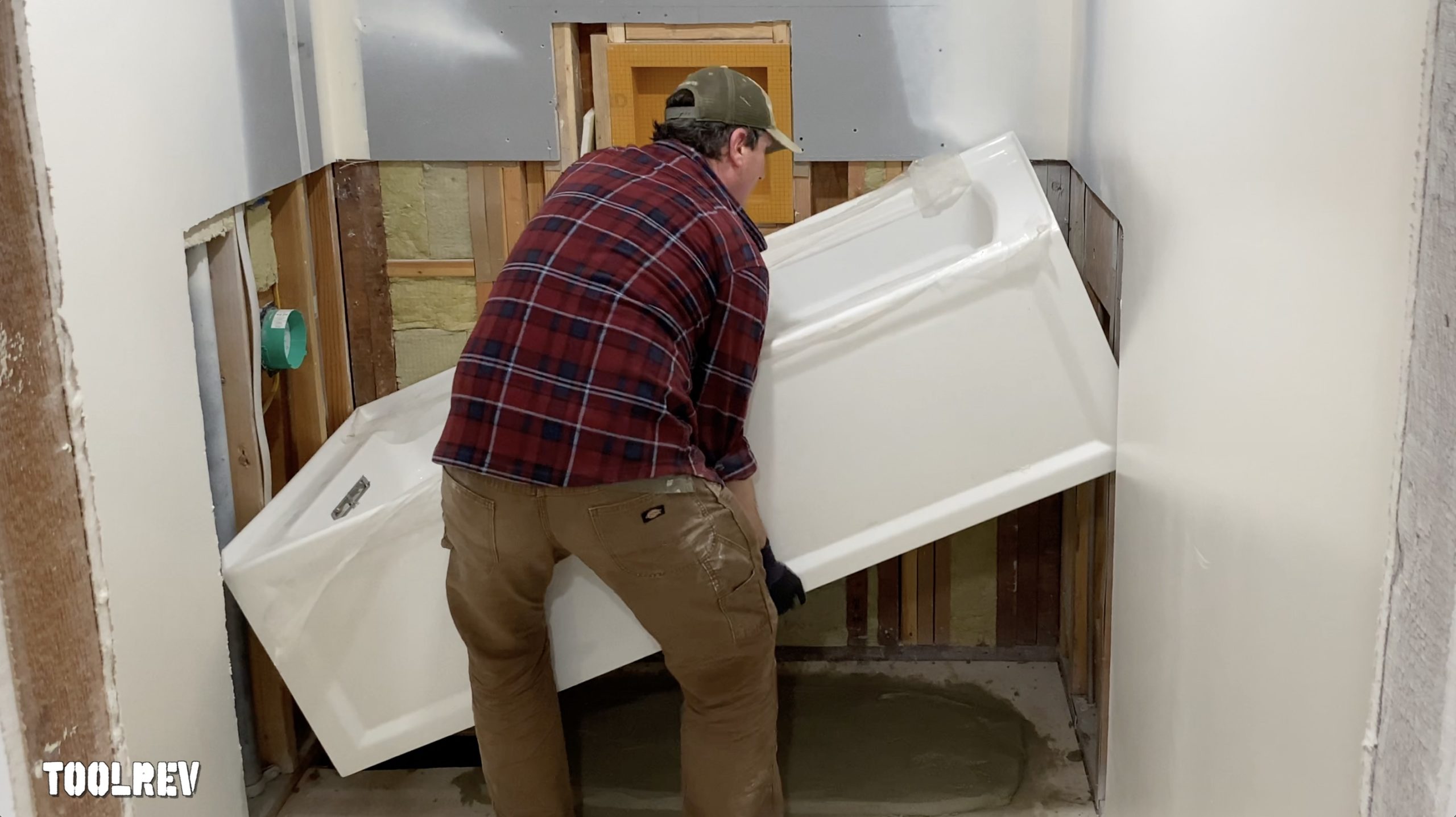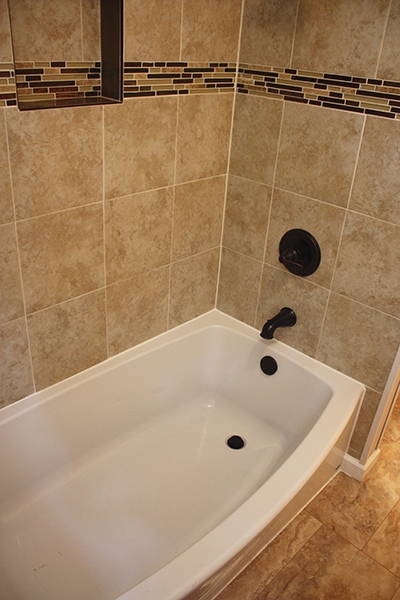Plumbing Basics: Before Bathtub Installation
Plumbing Basics: Before Bathtub Installation
Blog Article
We've uncovered this great article about How to Install a Bathtub Yourself down the page on the net and figured it made sense to share it with you in this article.

Mounting a bathtub isn't exactly brain surgery, but it does require solid plumbing, woodworking, and also occasionally, tiling abilities. Changing an old tub with a brand-new one is additionally a reasonably hard task. If the old bathtub is conveniently accessible, the project can move quickly; if you have to open a wall surface to get rid of the old bathtub and also place the new bathtub, the task is a lot harder. In either instance, the task is within a residence handyman's abilities, although you will need an assistant to leave the old tub and embeded in the new one. Make sure you have actually certified on your own for the job and also fit attempting it. As opposed to employing a professional to take over a halfway-completed task, it is better to take into consideration using one before you start. Chances are you might need an expert plumber to make tube connections.
This post will certainly aid you mount a new bath tub in your shower room if you have already acquired a new tub and do not require to change the plan of your previous water supply pipelines.
Your devices and material list should consist of the following:
Removing Old Taps
If you need to replace old taps with new ones as a part of your installation, then the first thing you ought to do is disconnect the supply of water. After doing so, switch on the taps to drain pipes any kind of water continuing to be in the system. The procedure of eliminating the existing taps can be quite problematic as a result of the limited gain access to that is commonly the situation.
Use a basin wrench (crowsfoot spanner) or a faucet tool to undo the nut that attaches the supply pipes to the taps. Have a towel ready for the remaining water that will originate from the pipelines. When the supply pipelines have been gotten rid of, use the very same device to loosen the nut that holds the taps onto the bath/basin. You will certainly require to quit the solitary taps from turning during this process. When the taps have actually been gotten rid of, the holes in the bath/basin will need to be cleaned up of any type of old securing substance.
Prior to going on to fit the brand-new faucets, contrast the pipe connections on the old taps to the new taps. If the old faucets are longer than the new taps, after that a shank adapter is needed for the brand-new taps to fit.
Fitting New Taps
If the tails of the brand-new faucets are plastic, then you will certainly need a plastic connector to stop damages to the thread. One end of the port fits on the plastic tail of the tap and also the other end offers a link to the current supply pipelines.
If you need to fit a monobloc, after that you will call for reducing couplers, which links the 10mm pipe of the monobloc to the common 15mm supply pipe.
Next, position the tap in the placing hole in the bath/basin making certain that the washers remain in area between the tap as well as the sink. Safeguard the faucet in place with the maker provided backnut. Once the tap is safely in position, the supply pipelines can be linked to the tails of the taps. The taps can either be attached by utilizing corrugated copper piping or with typical tap ports. The previous kind needs to be attached to the faucet finishes first, tightening up only by hand. The supply pipes can later be attached to the various other end. Tighten both ends with a spanner after both ends have been attached.
Installing the Bathtub
Using the two wood boards under its feet, position the tub in the required placement. The wood boards are practical in uniformly spreading out the weight of the bath tub over the area of the boards as opposed to focusing all the weight onto 4 tiny factors.
The following objective is to guarantee that the tub is leveled all round. This can be achieved by inspecting the level and also adjusting the feet on the tub till the level reads level.
To mount taps, fit the bottom of the outermost flexible tap port to the ideal supply pipe by making a compression join; then do the exact same for the other tap.
Turn on the water system and also examine all joints and also brand-new pipework for leakages and also tighten them if essential. Load the bath tub as well as also examine the overflow electrical outlet and the typical outlet for leaks.
Lastly, deal with the bath paneling as described in the manufacturer's user's manual. Tiling and sealing around the tub must wait until the bath tub has actually been made use of at least once as this will settle it into its final position.
Getting ready for the Installment
To start with, the sustaining framework provided with the bathroom must be fitted (if needed) according to the maker's directions. Next, fit the faucets or mixer to the bathtub. When suitable the faucet block, it is very important to make certain that if the tap comes with a plastic washer, it is fitted between the bathroom and the faucets. On a plastic bathroom, it is also sensible to fit a supporting plate under the taps system to avoid pressure on the bath tub.
Fit the versatile faucet adapters to the bottom of the two taps utilizing 2 nuts as well as olives (sometimes supplied with the tub). Fit the plug-hole outlet by smearing mastic filler round the sink electrical outlet opening, and afterwards pass the electrical outlet via the hole in the bathroom. Use the nut supplied by the supplier to fit the plug-hole. Take a look at the plug-hole outlet for an inlet on the side for the overflow pipe.
Next off, fit the end of the flexible overflow pipeline to the overflow outlet. Afterwards, screw the pipeline to the overflow face which ought to be fitted inside the bathroom. Make certain you use every one of the provided washing machines.
Link the trap to the bottom of the waste electrical outlet on the tub by winding the thread of the waste outlet with silicone mastic or PTFE tape, as well as screw on the catch to the electrical outlet. Connect all-time low of the overflow tube in a comparable manner.The bath must now be ready to be fitted in its last position.
Tiling Around the Tub
In the location where the bathroom fulfills the floor tile, it is necessary to seal the joins with a silicone rubber caulking. This is very important as the installation can move sufficient to crack a rigid seal, creating the water to penetrate the wall between the bath and also the tiling, leading to complications with dampness and feasible leaks to the ceiling below.
You can pick from a variety of coloured sealers to assimilate your fixtures and also fittings. They are offered in tubes and cartridges, and also are capable of securing spaces as much as a size of 3mm (1/8 inch). If you have a larger void to fill up, you can fill it with twists of drenched paper or soft rope. Remember to always load the bath tub with water before sealing, to allow for the movement experienced when the tub remains in use. The sealant can break fairly very early if you do not take into consideration this motion prior to securing.
Additionally, ceramic coving or quadrant floor tiles can be made use of to edge the bath or shower tray. Plastic strips of coving, which are easy to use as well as reduce to dimension, are also easily readily available on the market. It is recommended to fit the ceramic tiles utilizing waterproof or water-proof glue and also cement.
Bathtub Installation
How Important Is A Bathtub To Your Home?
High-quality baths, showers, and other bathroom updates are necessary when considering a smart investment in your home. It’s a room that you go to every day and one that is constantly being used by guests.The bathroom is one of the top trafficked rooms in a home and also one of the most valuable in terms of home resale.
Install Piping Before Tub
You will be using your existing drain and waste vent system, but pipes required include the hot and cold water supply lines and a pipe leading to a shower head. A mixing valve and shower head are also needed. Air chambers may be required.
Position the Tub
Lower the tub into place so that the continuous flange fits against the wall studs and rests on 1’x4' or 2’x4' supports. Anchor the tub to the enclosure with nails or screws inserted through the flanges into the studs.
NOTE: Remember, bathtubs and shower stalls may require support framing. A bathtub filled with water is extremely heavy, so check building codes and framing support before installing the tub.
Assemble Drain Connections
Assemble the bathtub drain connections by connecting the tub overflow with the tub drain above the trap, not beyond it. The trap will have a compression fitting that screws over the arm of the overflow assembly.
Place a Pipe For the Shower Head
First, locate a brass female threaded winged fitting and attach it to a framing support via a screw or a nail. Then run a pipe up the wall for the shower head. Sweat or solder the other side of the brass fitting to the top of the pipe.
Attaching Hot and Cold Water Lines
Attach your water lines for both hot and cold by sweating these directly into the hot and cold ports of the mixing valve. The mixing valve will be how water enters the tub’s system, not by the pipes themselves.
Install the Spout
Extend a piece of 1/2 inch pipe, or whichever length is specified in the manufacturer’s instructions, for the tub spout. Sweat on a male threaded fitting at the end of the pipe or use a brass nipple of the proper length and a 1/2 inch cap.
NOTE: At this point you should have your rough-in plumbing work inspected before proceeding further.
Check For Leaks
Restore the water pressure and check the drain connection and the supply pipes for any sign of leaking.
estore the Bathroom Wall
Replace the wall with moisture-resistant drywall as a base for your wall covering. Seal the joints between the wall and your new tub with silicone caulk as protection against water seepage.
https://www.berkeys.com/2016/12/02/bathtub-installation-dallas/

As a serious reader about How to Install a Bathtub: Install an Acrylic Tub and Tub Surround, I thought sharing that chunk was smart. Are you aware of another person who is occupied with Tools You Need to Install a New Bathtub ? Please feel free to promote it. Thanks for your time. Please pay a visit to our blog back soon.
Immediate attention? Phone us! Report this page